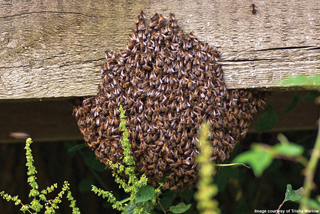 What a roller-coaster of a month April has been! One minute, snow and freezing weather – the next, summer-hot days as if the snow had never happened! Needless to say, apart from being confusing for us (in terms of how we should dress, for example, if we are going out), it has been extremely confusing for the bees. On the fine, warm days they have been bringing in loads of pollen, which indicates (generally) that there is a laying queen present in the hive.
What a roller-coaster of a month April has been! One minute, snow and freezing weather – the next, summer-hot days as if the snow had never happened! Needless to say, apart from being confusing for us (in terms of how we should dress, for example, if we are going out), it has been extremely confusing for the bees. On the fine, warm days they have been bringing in loads of pollen, which indicates (generally) that there is a laying queen present in the hive.
On the cold days, they have clustered as they do in the middle of winter, trying their best to keep the temperature of the young larvae at 35°C, otherwise these will perish. This uses up lots of stores (the bees need the carbohydrate of their honey stores to convert into heat), so it is critical at this time of year that we ensure there is plenty of food for our charges. Like the plants in our gardens, the development of the
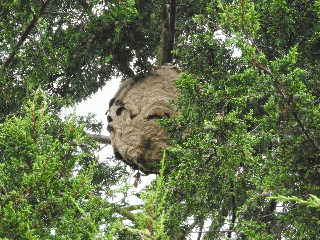
bee colonies is somewhat lagging behind their usual state, but, again like the plants, they’ll catch up once the season gets going.
Some of my colonies, who had until now ignored the sugar fondant I had placed on their crown-board, are now devouring it avidly, whilst others are flying around in their empty fondant container wondering when the next lot of food will be arriving. We are now, however, at a point when we can feed liquid sugar syrup, as there are now nectar-producing plants in bloom (blackthorn, in particular, as well as willow, crocuses, bluebells, etc), and finding a liquid “nectar” on the crown-board does not excite the bees in the same way that it would in the winter, so those colonies needing extra food are being given this liquid feed to tide them over the rough times when the weather is adverse.
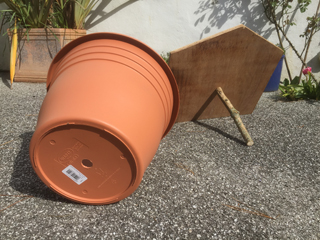
Three topics of note this month, apart from the belated development of our colonies, are the following. Firstly, today the EU Council of Ministers is voting on whether or not to ban the neonicotinoid pesticides which reputedly are responsible for the death of millions of honey bees across Europe. Top scientists say these neonics (it’s easier to pronounce this than the full-length word!) are contributing to the decline of honey bees and want them banned, but whilst there are over 75{c8c3b3d140ed11cb7662417ff7b2dc686ffa9c2daf0848ac14f76e68f36d0c20} of Europeans wanting this ban, there are four countries resisting, viz.
Spain, Italy, Greece and Poland. Despite the fact that farmers’ unions, beekeeping associations and scientists support the idea of a ban, the Ministers of these four countries think they know better and are yet to be persuaded to support the consensus. Petitions and direct approaches have been undertaken in the past few weeks – we will shortly know the result and can only hope that common-sense prevails. Have they forgotten about “the precautionary principle”, i.e. if they’re not sure if something is doing harm it might be better to ban its use until it is known to be safe?
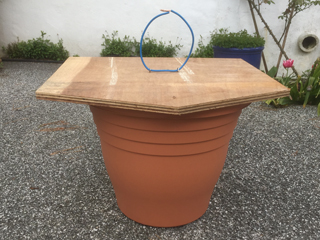
And as I write this, a newsflash has come through on my phone that EU member states have voted in favour of an almost complete ban on the use of neonicotinoids across the EU! Praise be! Spain, Italy and Greece came onside but Poland abstained – so why are they there if they’re going to sit on the fence? Why don’t they think about what they are being asked to vote on rather than just abnegating their responsibilities.
Anyway, common sense has prevailed and the new restrictions will apply to almost all outdoor uses of the chemicals, though greenhouse use is still permitted to some degree (despite the risk of water run-off pollution, amongst other dangers – half of all lakes and rivers monitored in England are already chronically polluted with neonicotinoids! What is that doing to our soil and crops?).
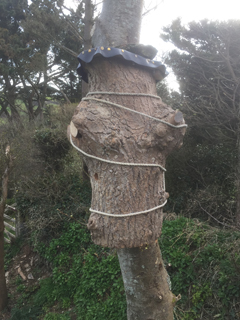
However, I think this near-total ban could be the beginning of a new era for farming, perhaps helping us move towards a more organic approach with recognition of the importance of safeguarding our environment. It’s back to the eco-friendly approach to everything, whether it is bees, plants (cottage-garden types as opposed to the highly hybridised multi-floral, in-your-face type of plants) or even electric cars – but that’s for another article!
Secondly, the Asian Hornet has reared its ugly head again, this time in the Bury area of Lancashire. The sighting of a single Asian Hornet has been confirmed by the National Bee Unit. It was spotted by a member of the public in a cauliflower, which in turn has been traced back to Boston in Lincolnshire. The NBU is currently undertaking an investigation in both areas using the protocol established after the sightings in Tetbury and Woolacombe in the past two years.
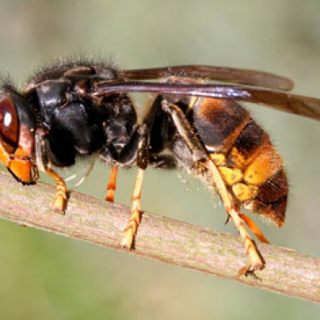
This sighting by a member of the public just goes to show how important members of the general public are in assisting our efforts to prevent the Asian Hornet from establishing in the UK. Please remain vigilant and report any possible sightings to me, in the first instance if you would like to, use the Asian Hornet App on your mobile phone to record, photograph and locate the sighting if you can, or email alertnonnative@ceh.ac.uk, when appropriate measures will be put in place to verify the sighting and to eliminate any potential threat. If you spot what you think could be a possible nest, do not approach it! Get the experts involved as soon as possible.
The third topic is my new approach to bait hives for catching swarms. I have read many articles recently about simple bait hives using fibre plant pots but unfortunately have not been unable to source these in the UK – they appear to be popular in the US but not over here. You can get the small ones for potting up seedlings but nothing big enough to hold a swarm – something at least 15” across the open end is needed.
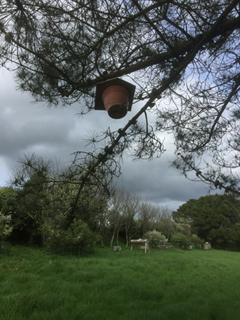
I have therefore made a big compromise by using plastic plant pots of the appropriate size, on the basis that any swarm occupying such a container will only be in there for less than 24 hours, as the swarm would need to be moved to its permanent location the same evening, so the effects of plastic on the bees would be minimal. Having obtained some 15” and 16” diameter pots, I then cut a piece of ply-wood to close off the open end and in the middle of this (what will become the) roof, I attached a piece of branch from some brash that has been thinned from some trees so that it basically hung down at 90° to the roof.
Any swarm would then cluster on the underside of the roof, inside the pot, and wrap itself around the hanging branch. A mixture of either old comb or dross remains from melting and straining wax and honey were then placed inside the pot and the walls smeared with a paste of melted wax, olive oil and Lemon Grass Oil. Time will tell if these attractants will do the trick but it’s been enjoyable making up the various bits and pieces. Updates to follow later in the season.

I also have installed my log hive, described last month. It is located at about 12′ off the ground in a pollarded tree in the apiary. If a swarm occupies this, then we will be able to monitor how it copes with this natural hive compared with the traditional ones, without feeding or treatment for Varroa. This is one of the things that makes beekeeping so fascinating for me – there is always something different to try, some new thought or idea that one either has or comes across, which allows the craft to evolve (or even regress to its origins, perhaps!). Updates also to follow on this.
So it just remains for me to remind you to keep your eyes open for Asian Hornets – you, the members of the public, are equally as important as beekeepers in this regard, as you multiply up the numbers of eyes watching for its arrival, so it will be spotted sooner. And finally, swarms! It’s that time of year again. Please don’t let any swarms you might see go unreported. Honey bees are the canary in the coal-mine. They reflect the state of our planet, so it is vital we look after those we have and that all swarms are captured and hived so we can ensure their survival and their increase.
Colin Rees – 01872 501313 – colinbeeman@aol.com
